I spent three months in Valletta, the capital of Malta, a city of about 6,000 people located on a peninsula surrounded on three sides by the sea. Valletta is a UNESCO World Heritage Site, founded in the 16th century by the Knights of St. John, and is now known for its dense architecture, churches, fortresses, and narrow streets that lead down to the sea. During my stay, each day brought me a new opportunity to see what makes this city unique – from the massive walls that surround it, to the nightlife that takes place along the coast and the streets lined with cafes.When I arrived, the first thing I noticed were the massive stone walls that surround the old town. La Valletta is a compact city, but every part of it oozes history. I walked along Republic Street and King George Street, the main streets that divide the city into two parts. Yellow limestone buildings with wooden balconies.On my first day, I visited the Upper Gardens of Baraka. It is located on a cliff and overlooks Velika Luka, one of the deepest natural harbors in the world. I saw parts of the fortifications, ships going in and out of the harbor, and three towns on the other side of the water.

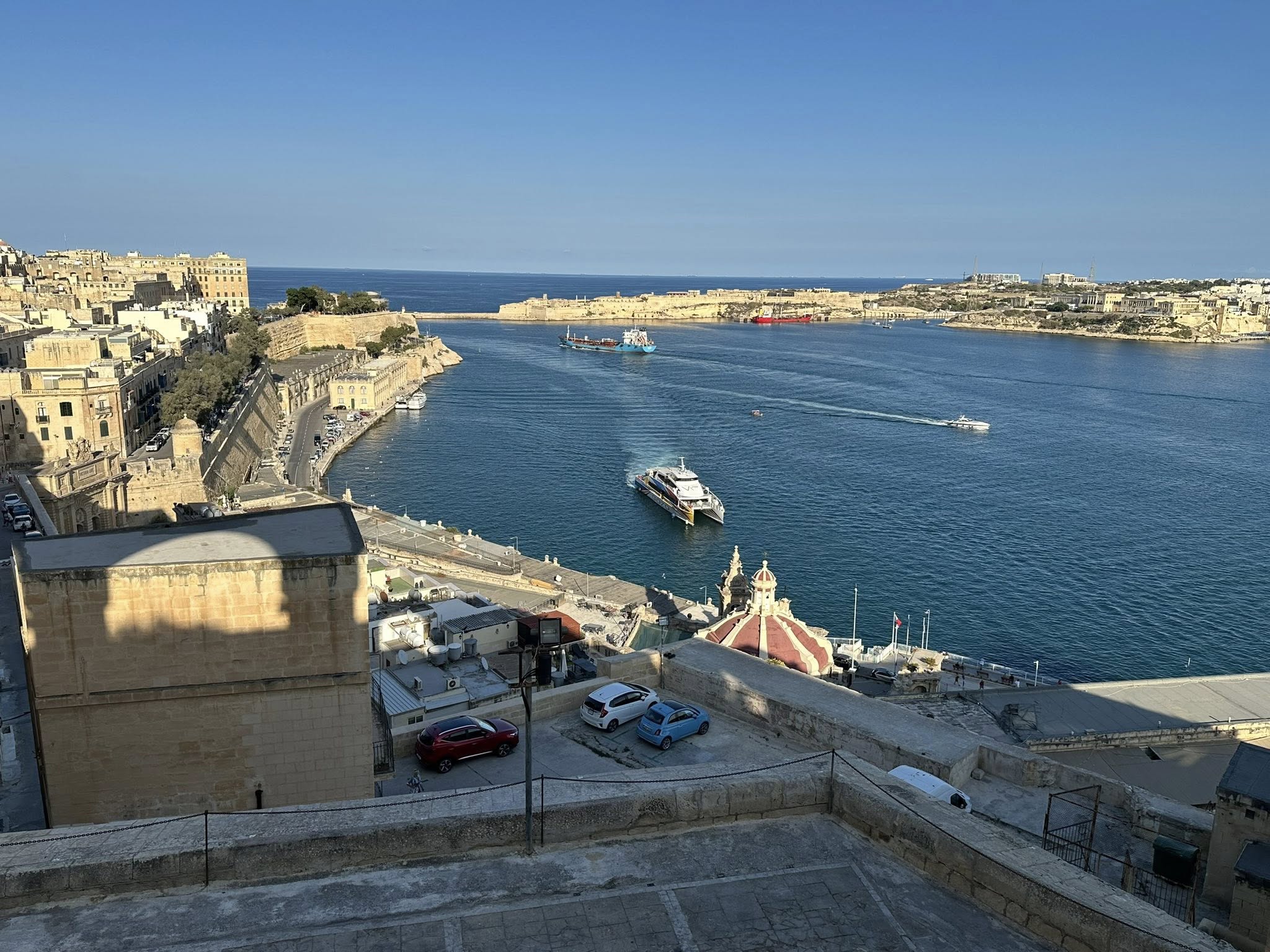

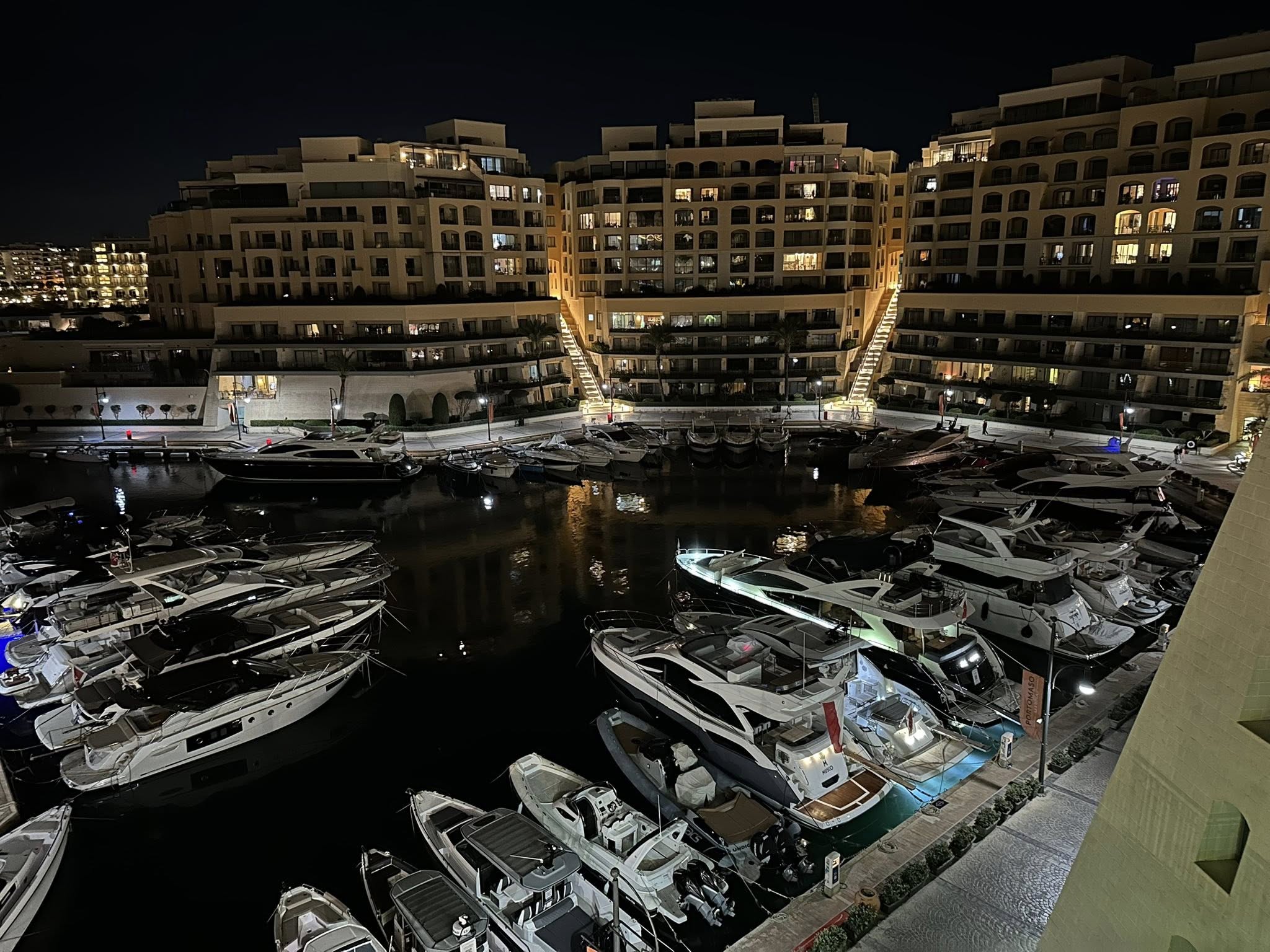
 After the heritage, I visited St. John's Cathedral. The interior is completely in the Baroque style. Frescoes on the walls and ceiling, on the floor of the tomb of the knights. There is also Caravaggio's work "Beheading of St. John", one of his most famous paintings. I lived near the Church of St. Paul the Shipwrecked, so I often passed by it. I spent one afternoon in the National Museum of Fine Arts, which houses the works of local and foreign artists who worked in Malta.During the day, I walked through the streets that go down to the sea, passed by the Manoel Conservatory, an old theater that is still active today. I also visited the fortress of St. Elmo, which looks towards the entrance to the Great Harbour. I learned about the Siege of Malta and the role of the fortress in the fight against the Ottomans. I saw uniforms, weapons, documents, and mock-ups showing what everything looked like.
After the heritage, I visited St. John's Cathedral. The interior is completely in the Baroque style. Frescoes on the walls and ceiling, on the floor of the tomb of the knights. There is also Caravaggio's work "Beheading of St. John", one of his most famous paintings. I lived near the Church of St. Paul the Shipwrecked, so I often passed by it. I spent one afternoon in the National Museum of Fine Arts, which houses the works of local and foreign artists who worked in Malta.During the day, I walked through the streets that go down to the sea, passed by the Manoel Conservatory, an old theater that is still active today. I also visited the fortress of St. Elmo, which looks towards the entrance to the Great Harbour. I learned about the Siege of Malta and the role of the fortress in the fight against the Ottomans. I saw uniforms, weapons, documents, and mock-ups showing what everything looked like.

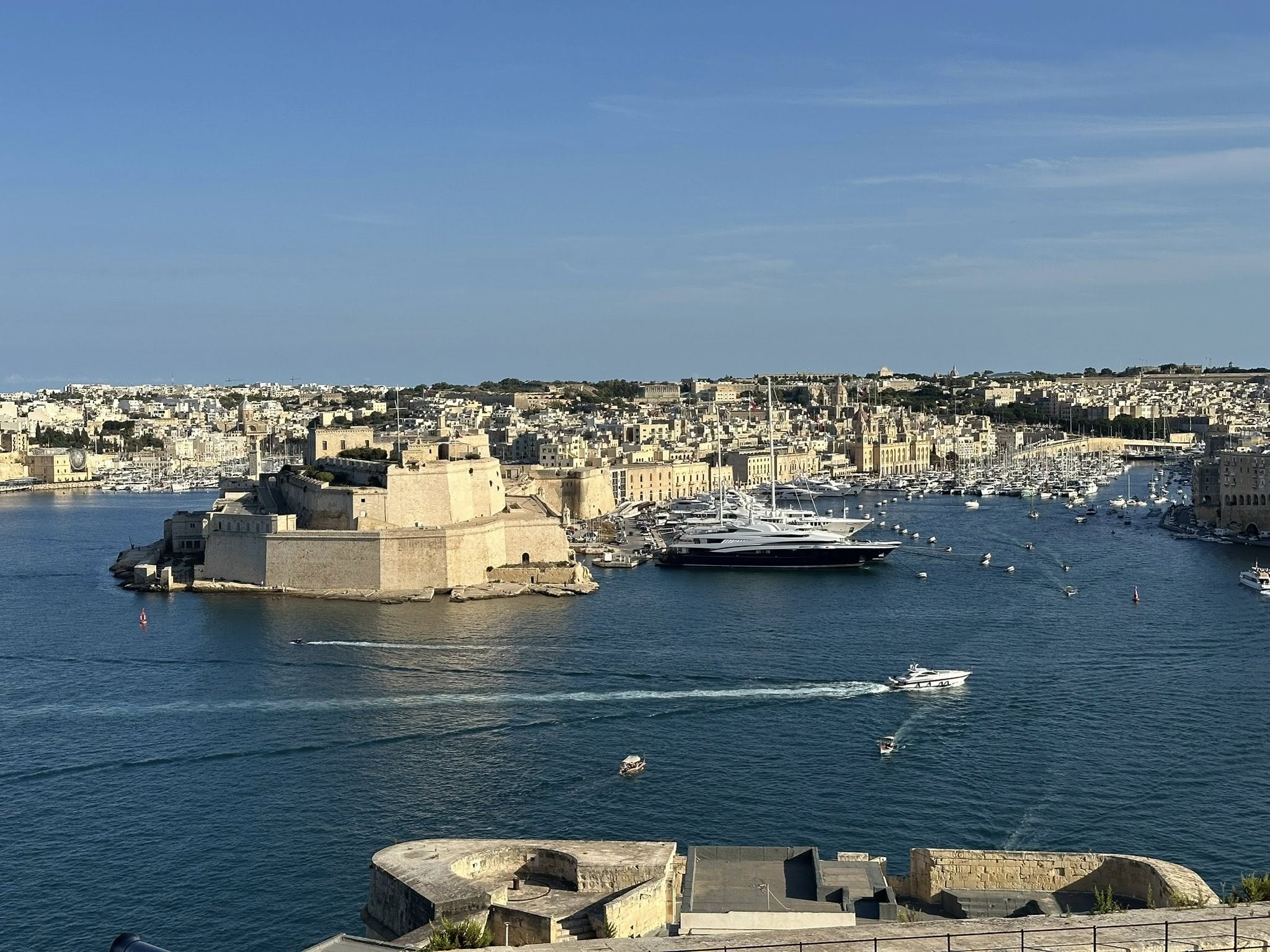
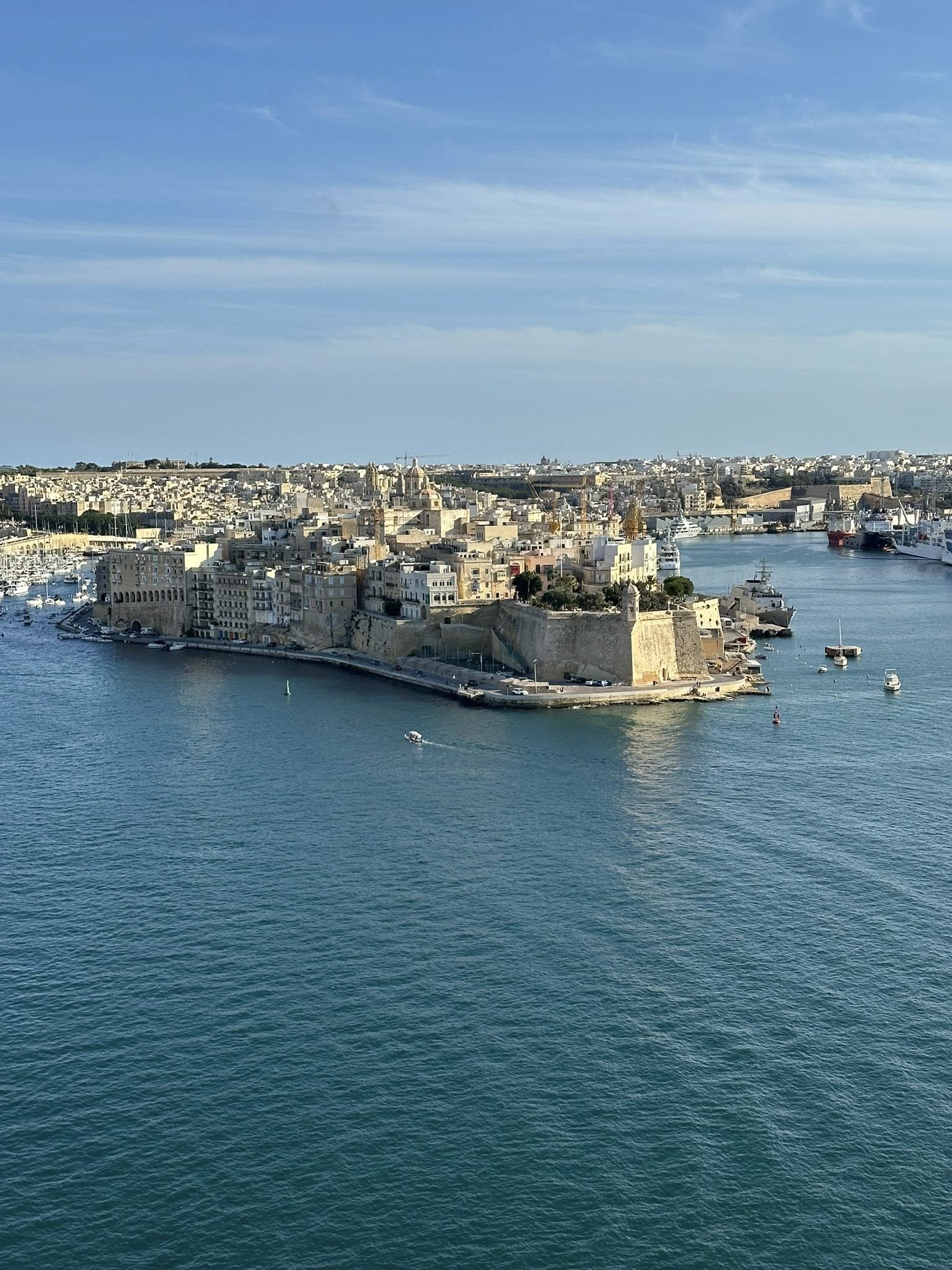
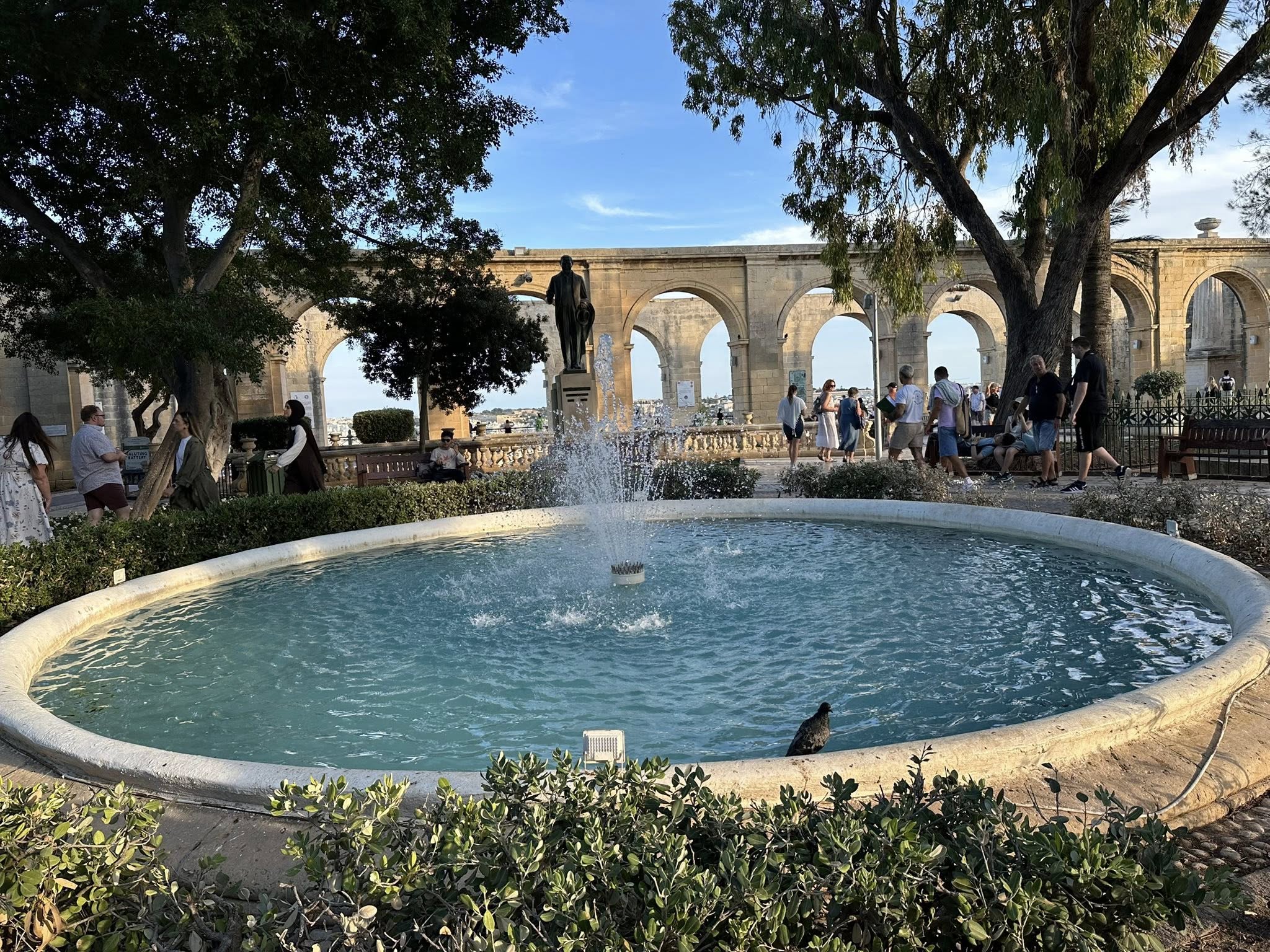
 The fortress of St. Barbara overlooks the Great Harbour. The view of these ramparts and walls built in the 16th century is incredible.
Just imagine how it all looked in the Middle Ages!
The fortress of St. Barbara overlooks the Great Harbour. The view of these ramparts and walls built in the 16th century is incredible.
Just imagine how it all looked in the Middle Ages!
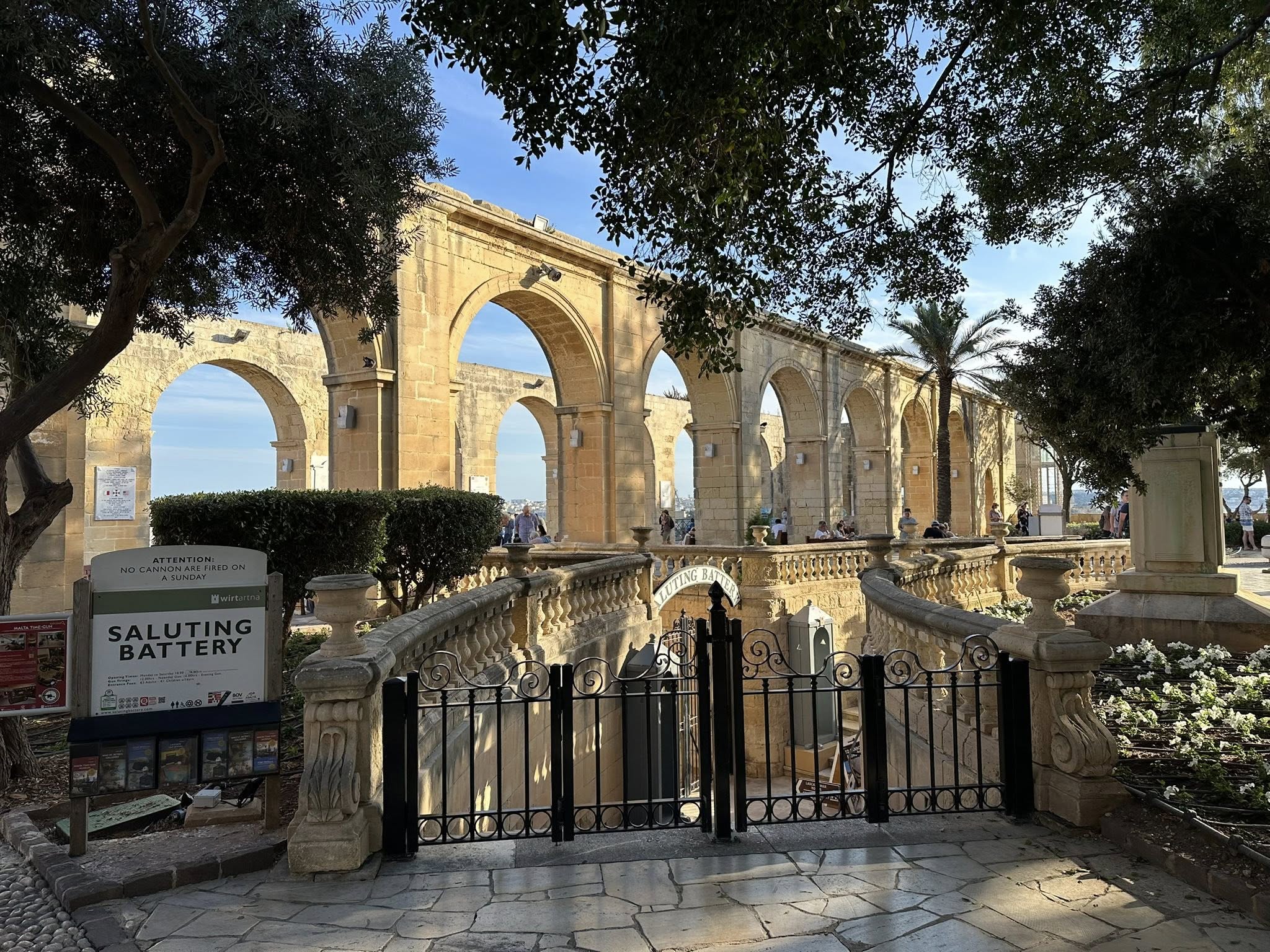 Near the fortress of Saint Barbara, there is Victoria's Gate, also known as Porta del Monte, named after Queen Victoria.I was also fascinated by the Triton fountain, which is located right in front of the city gates of Valletta. The fountain consists of three bronze statues of Triton.From Gornji Barak vrtov you can see and visit the part of the fortification where there are eight cannons arranged in a row. Every day at 12:00 and 16:00 you can hear the honorary cannon blasts.
Near the fortress of Saint Barbara, there is Victoria's Gate, also known as Porta del Monte, named after Queen Victoria.I was also fascinated by the Triton fountain, which is located right in front of the city gates of Valletta. The fountain consists of three bronze statues of Triton.From Gornji Barak vrtov you can see and visit the part of the fortification where there are eight cannons arranged in a row. Every day at 12:00 and 16:00 you can hear the honorary cannon blasts.
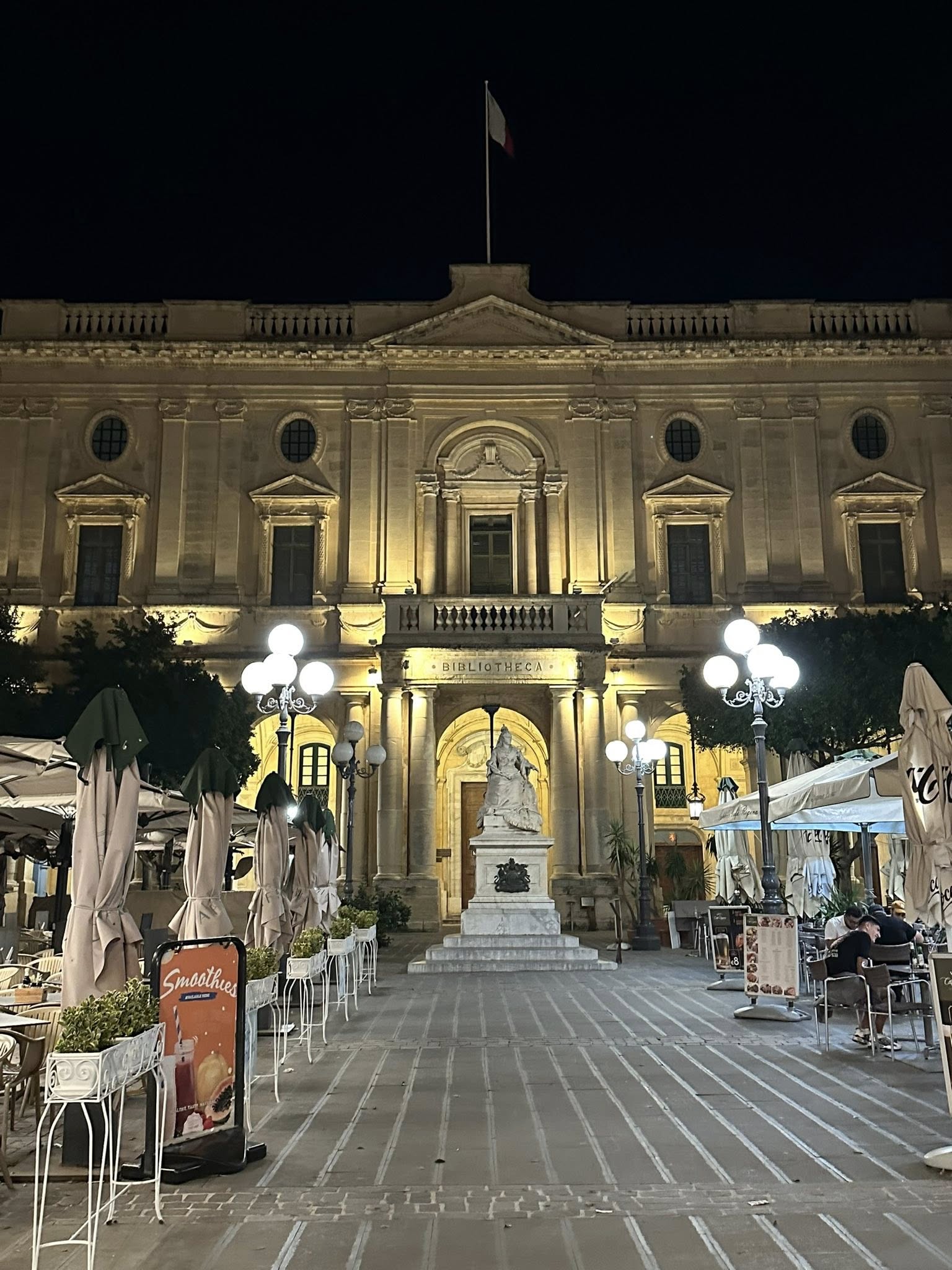

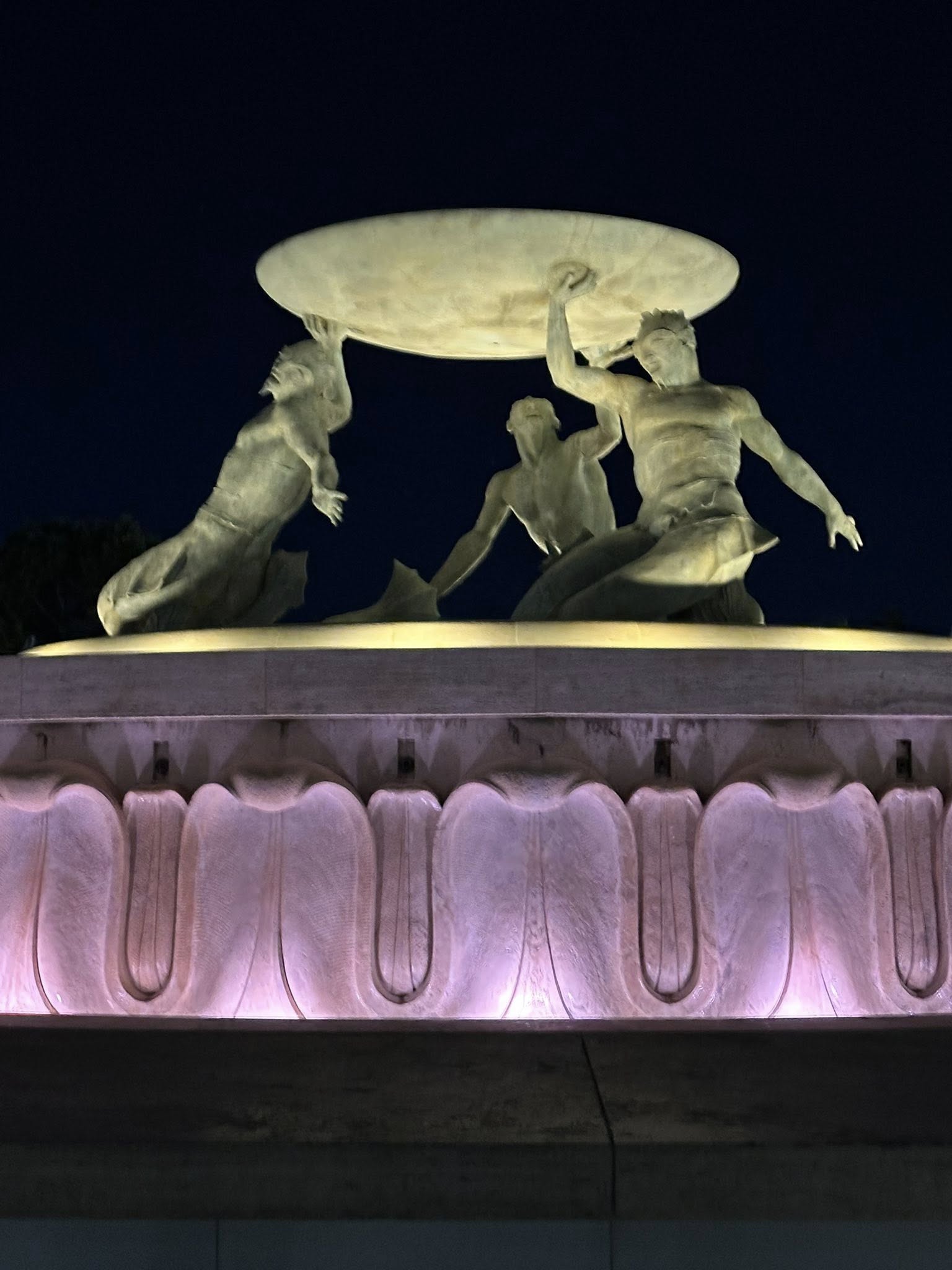

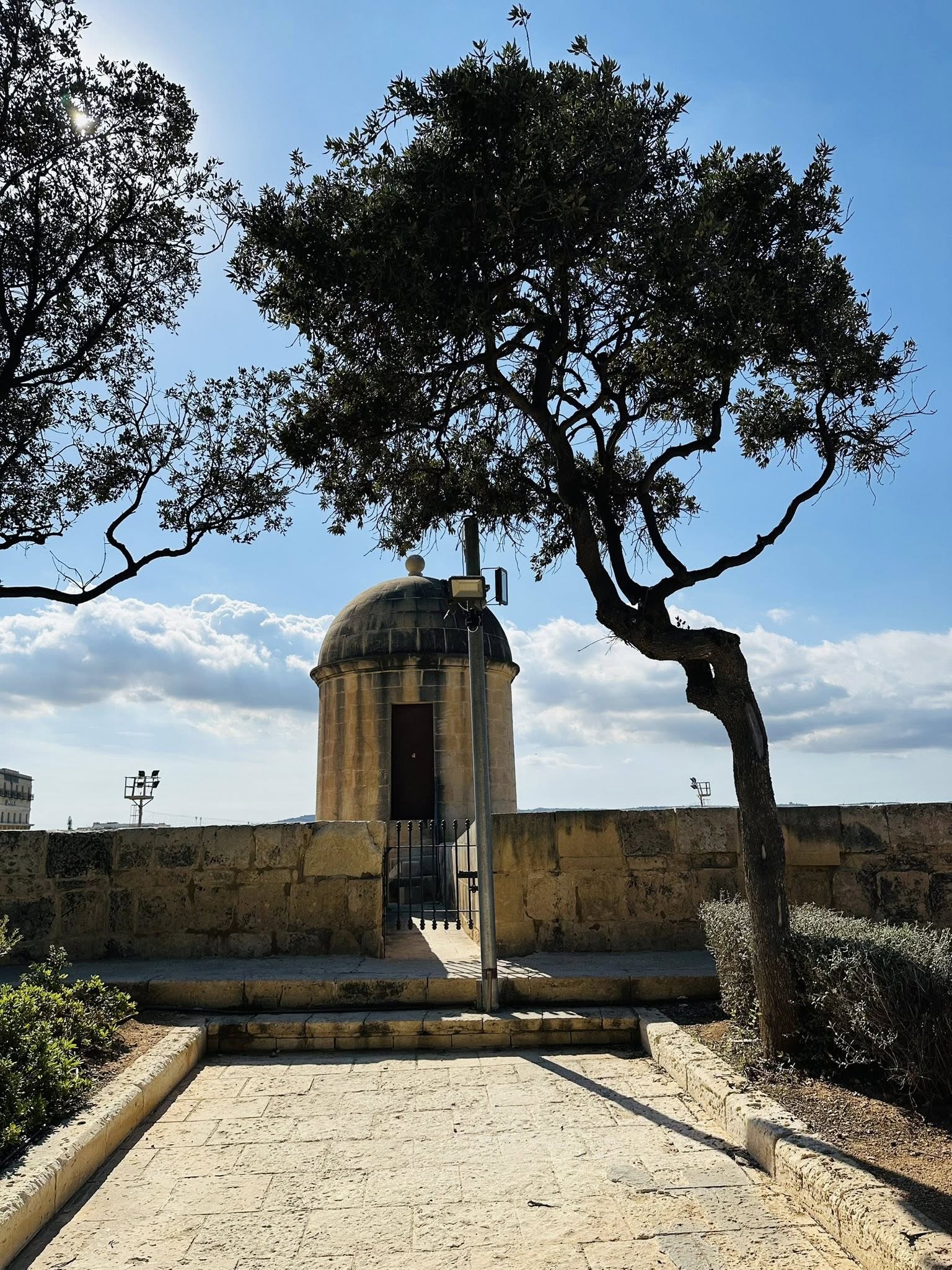
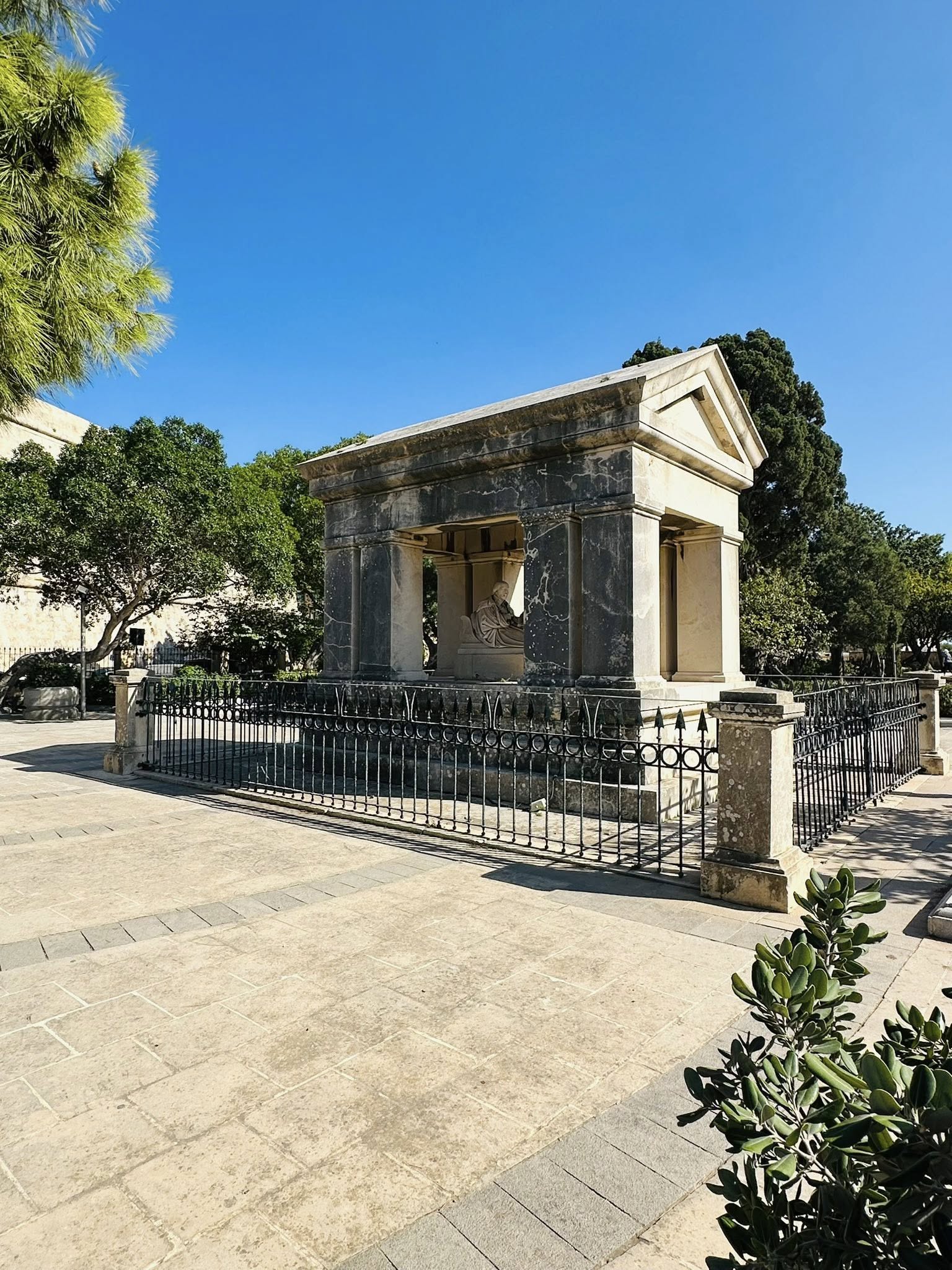
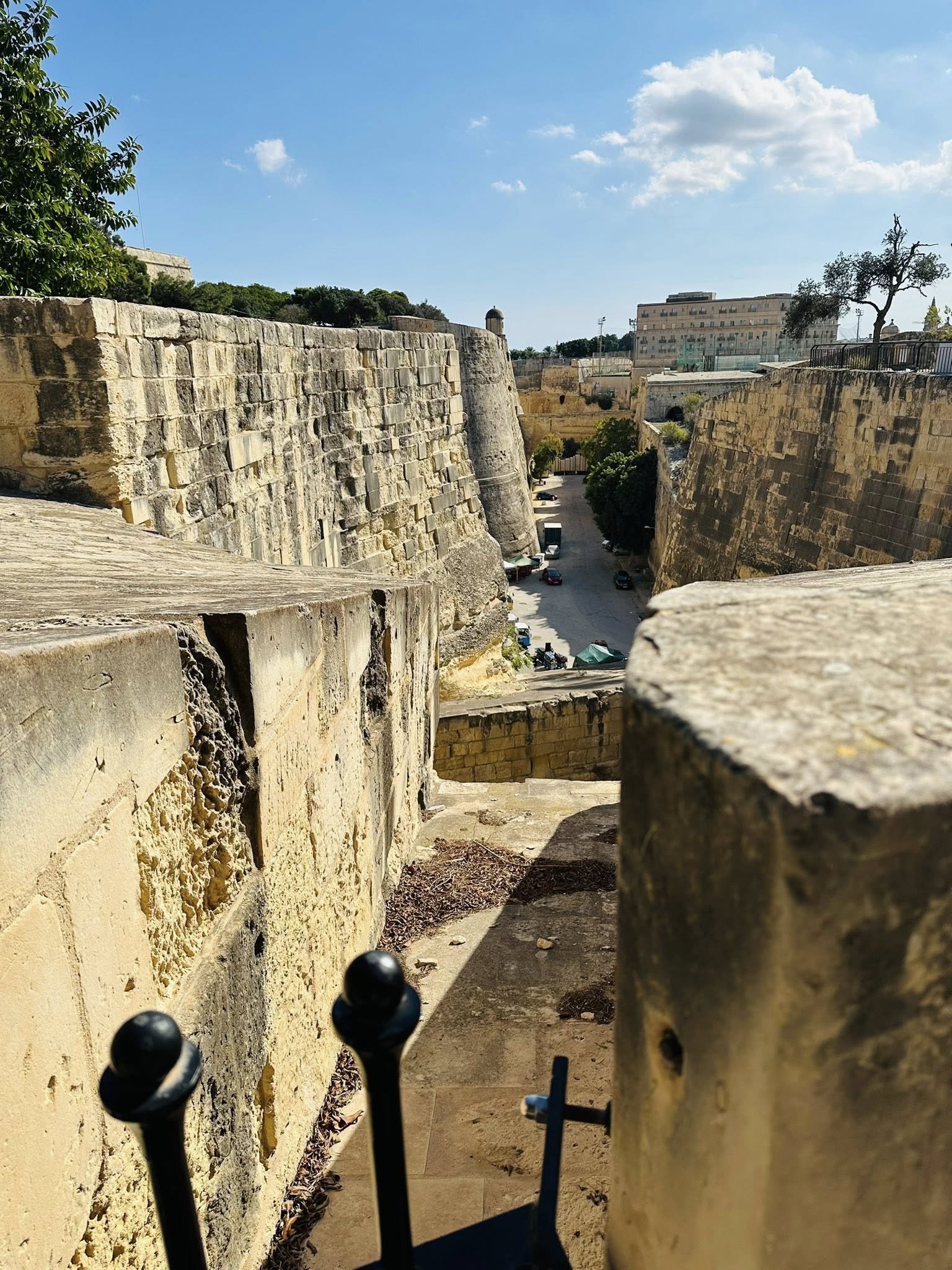
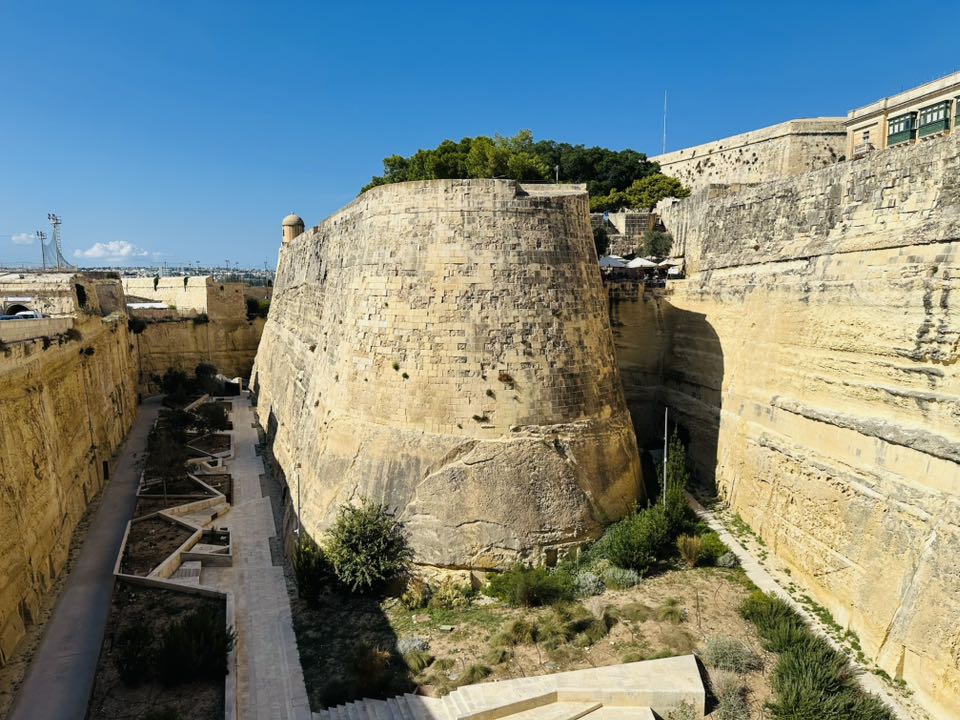


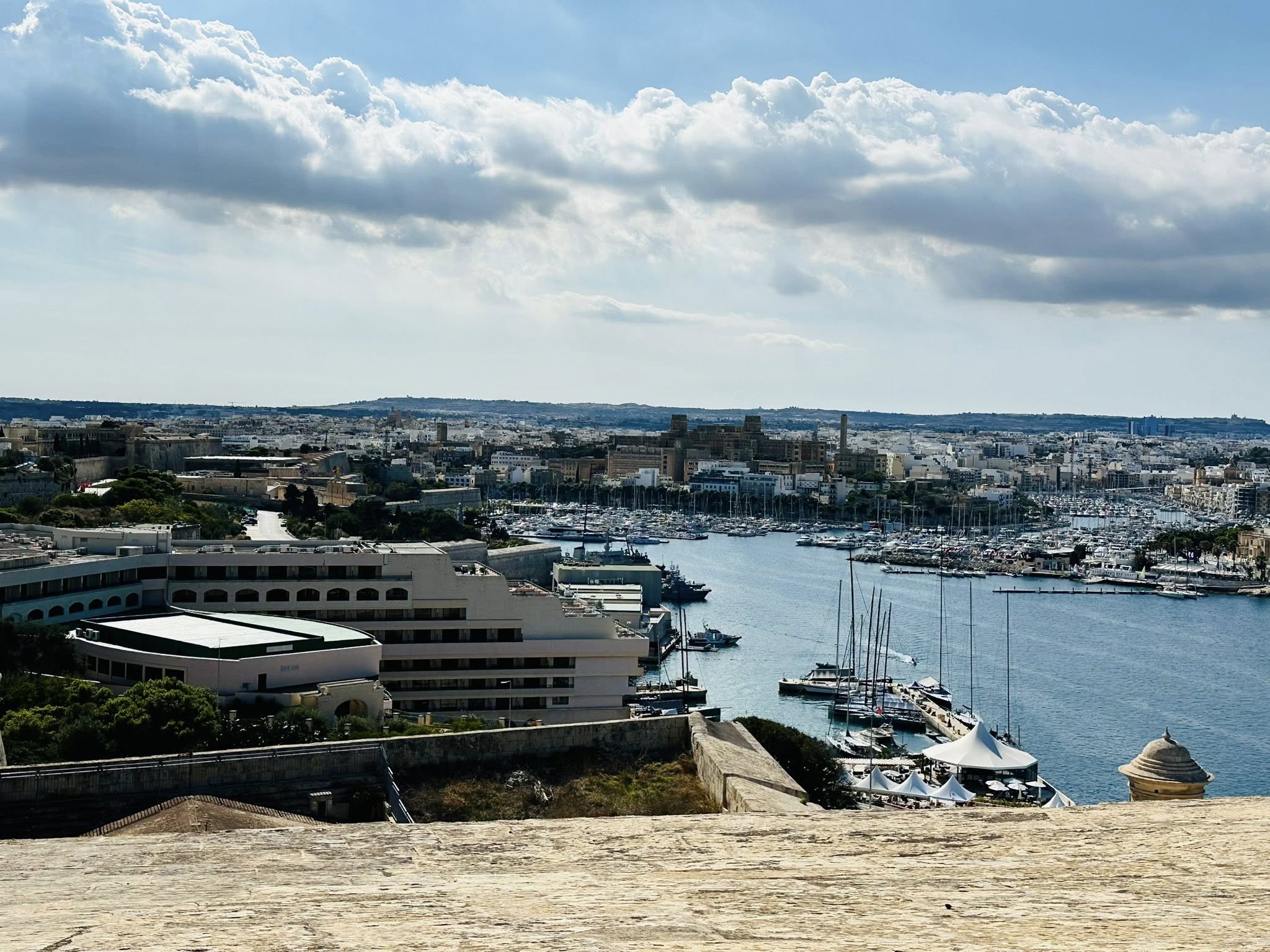 Considering that I worked during the day and visited historical sights on the weekend, my photos were mostly taken at night because I was on the streets of Valletta every evening.At night, Valletta becomes quieter, but the lights from the restaurants and bars give the streets a different life. I walked along the waterfront, just off Marsamxett Harbour, and watched the boats illuminated by the moonlight. Sometimes I sat in a bar on Strait Street, famous for its cafes nestled in a narrow alley. The streets were quiet, but there were always customers sitting under the lamps on the terraces, drinking wine and looking out at the sea.
Considering that I worked during the day and visited historical sights on the weekend, my photos were mostly taken at night because I was on the streets of Valletta every evening.At night, Valletta becomes quieter, but the lights from the restaurants and bars give the streets a different life. I walked along the waterfront, just off Marsamxett Harbour, and watched the boats illuminated by the moonlight. Sometimes I sat in a bar on Strait Street, famous for its cafes nestled in a narrow alley. The streets were quiet, but there were always customers sitting under the lamps on the terraces, drinking wine and looking out at the sea.
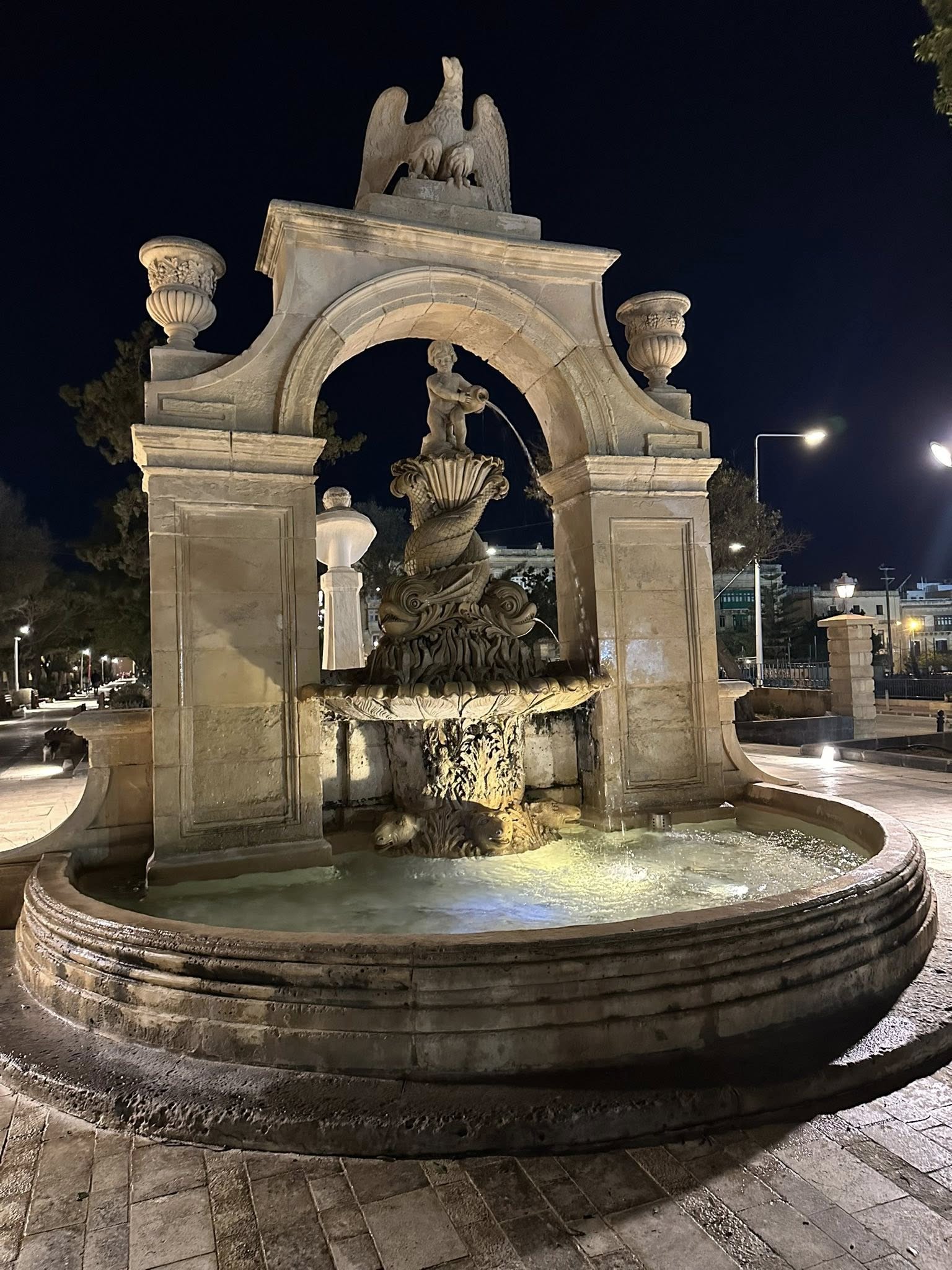

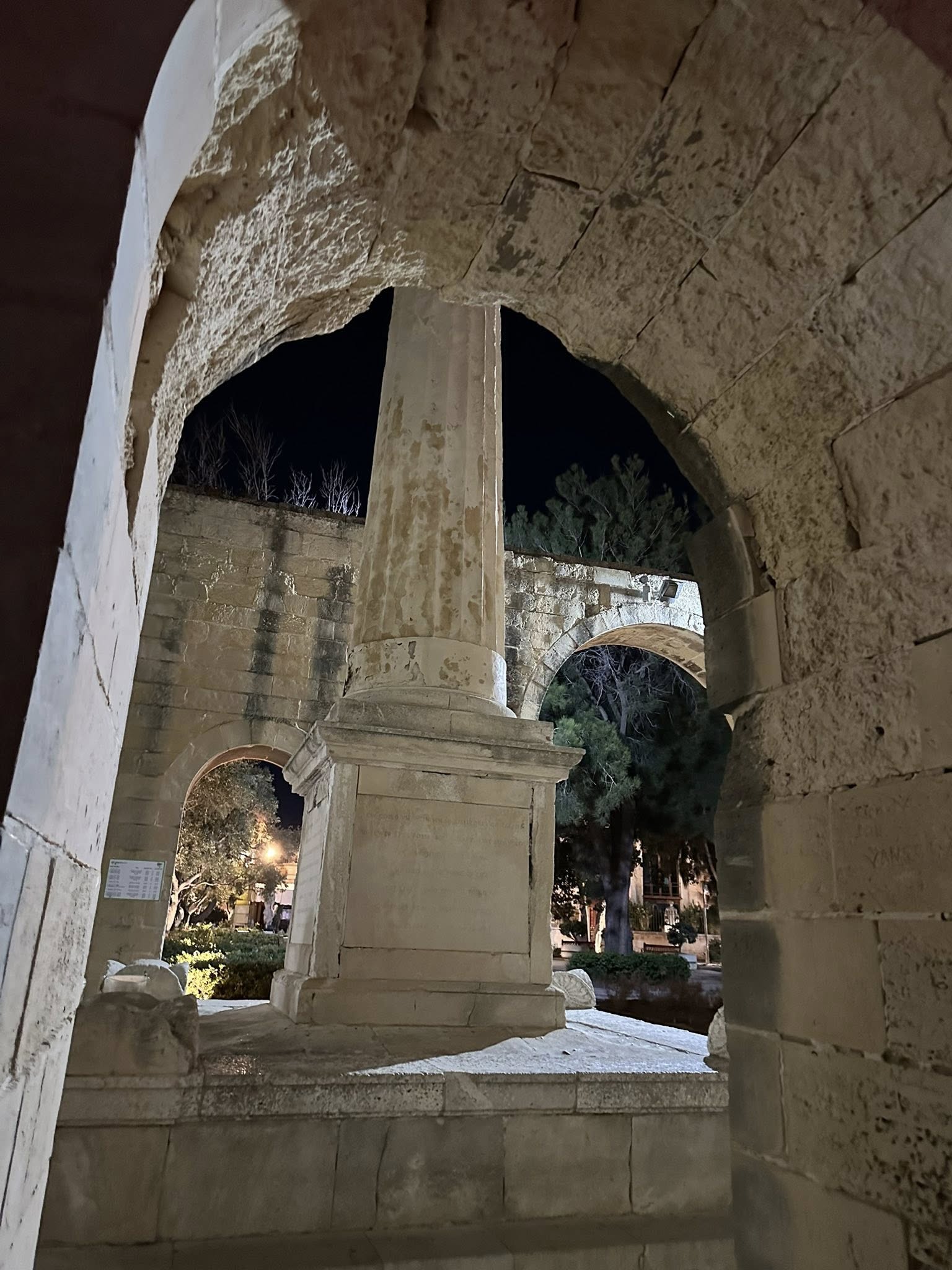
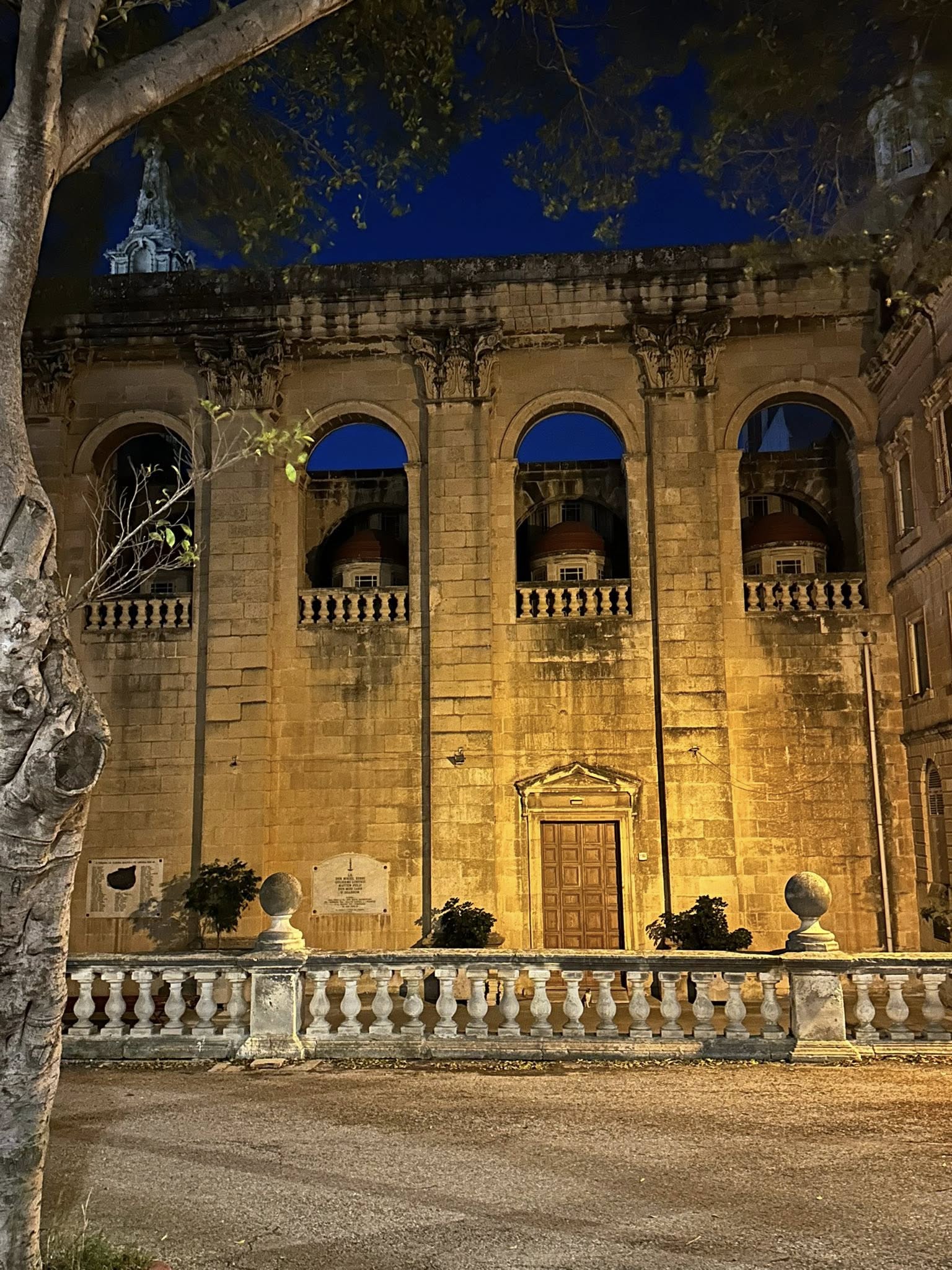
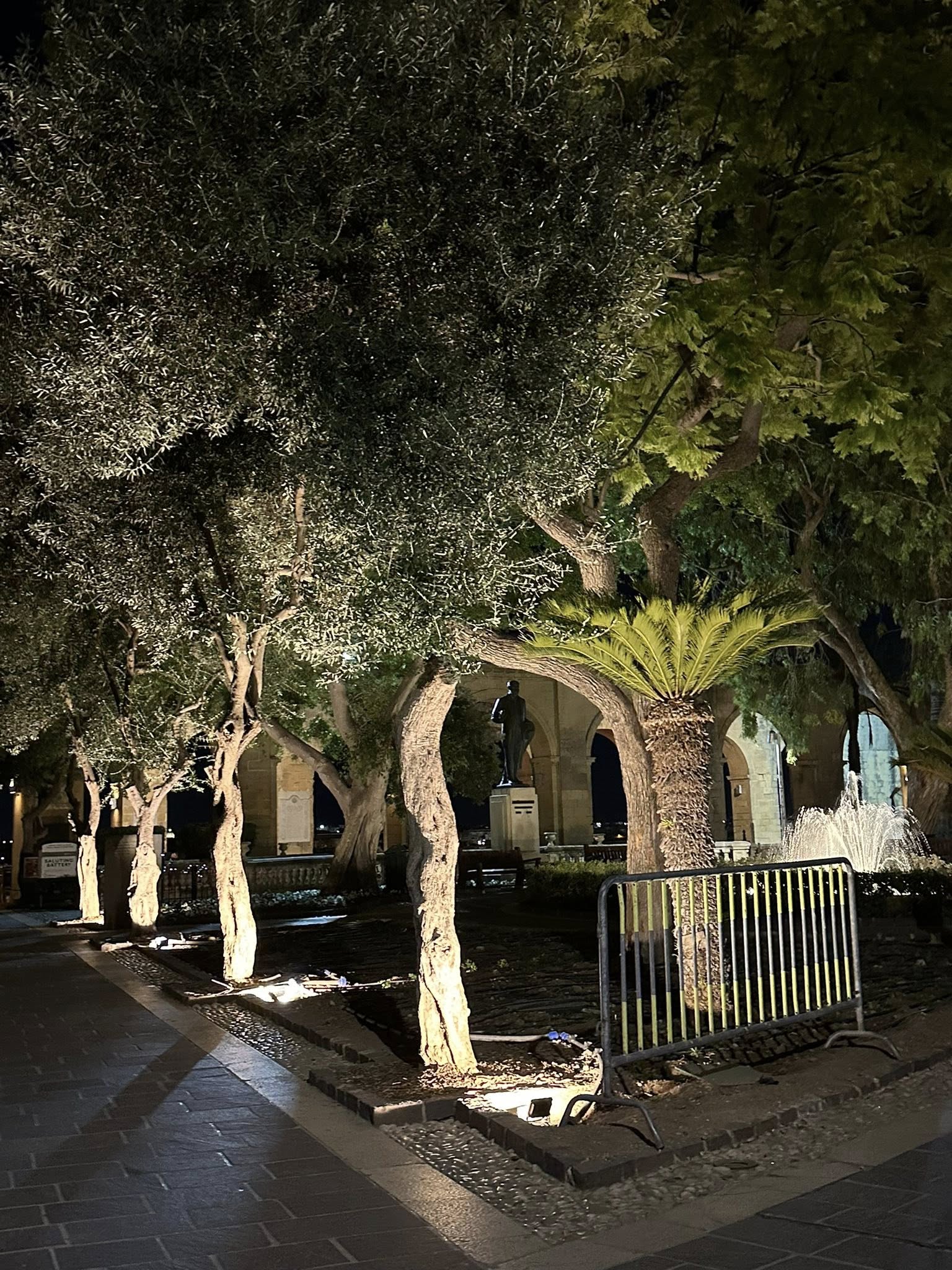
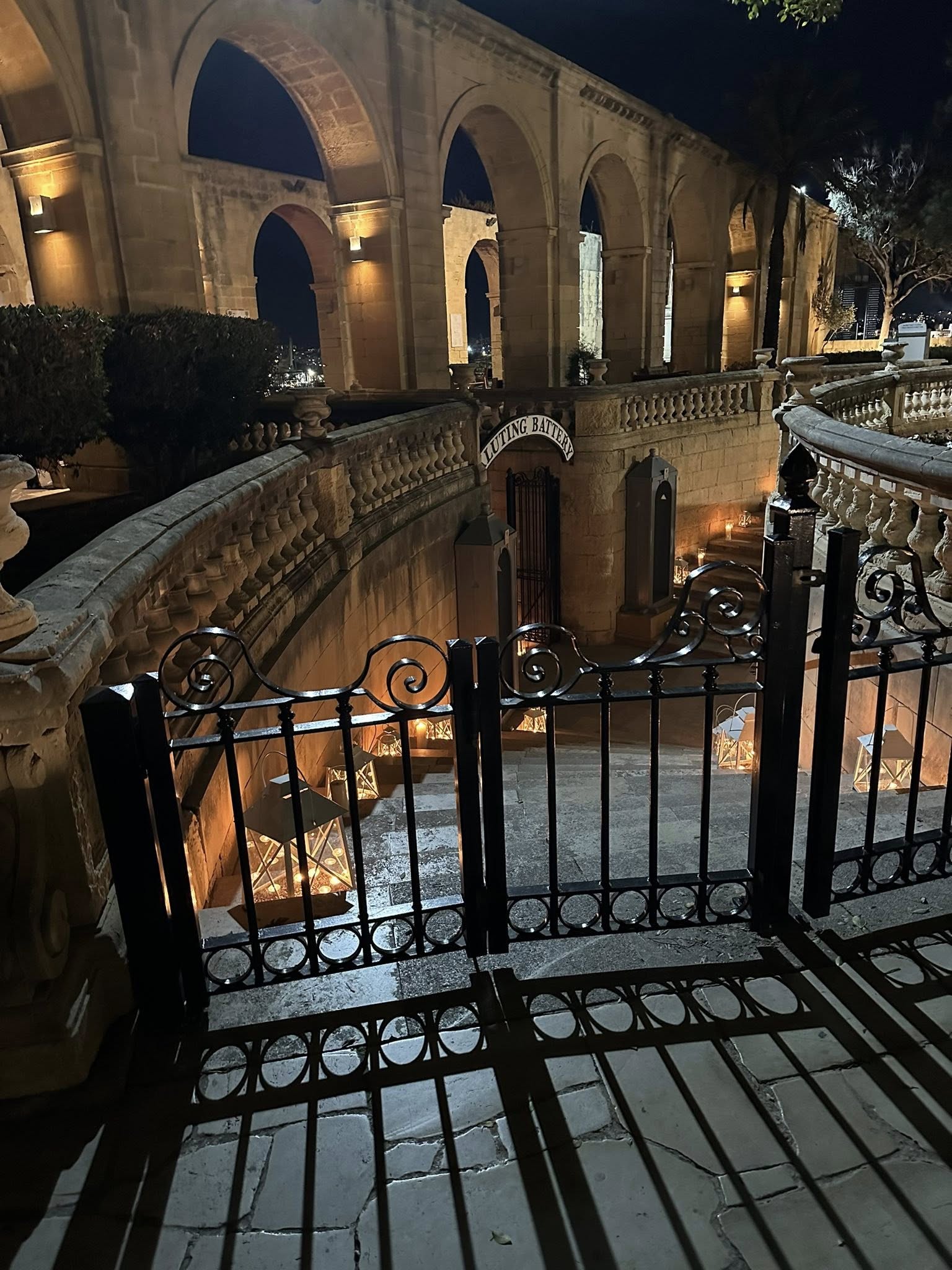
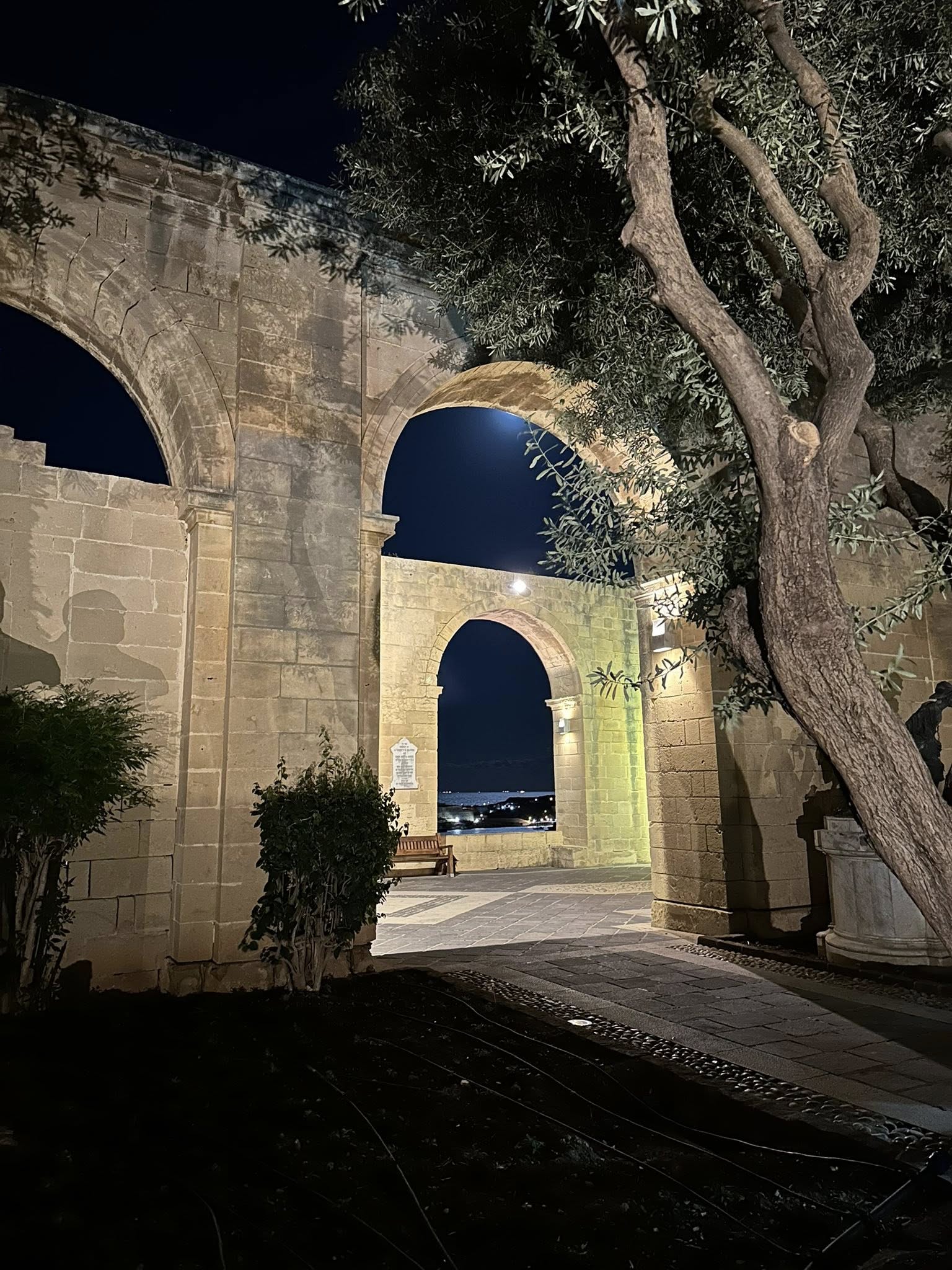
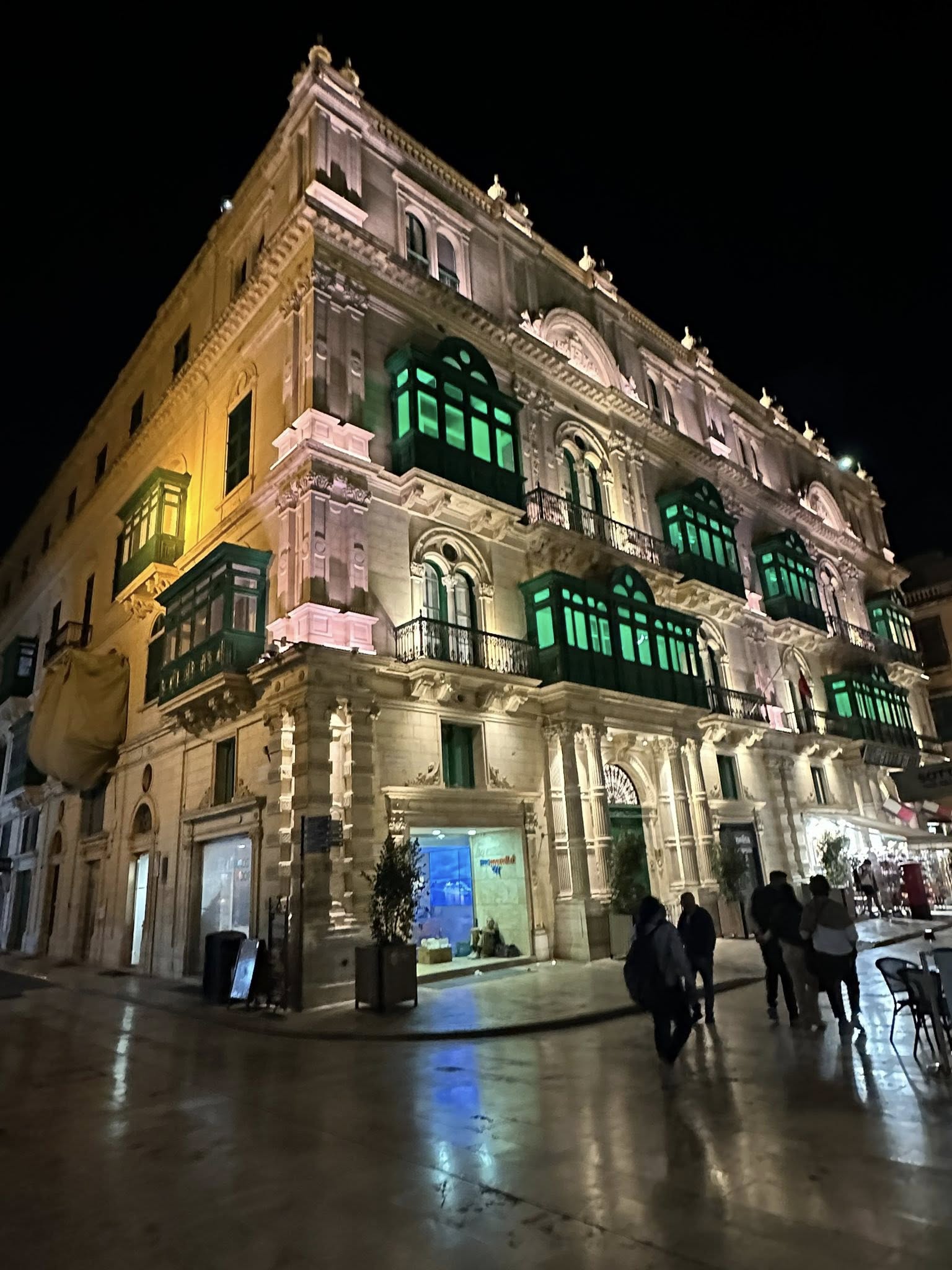



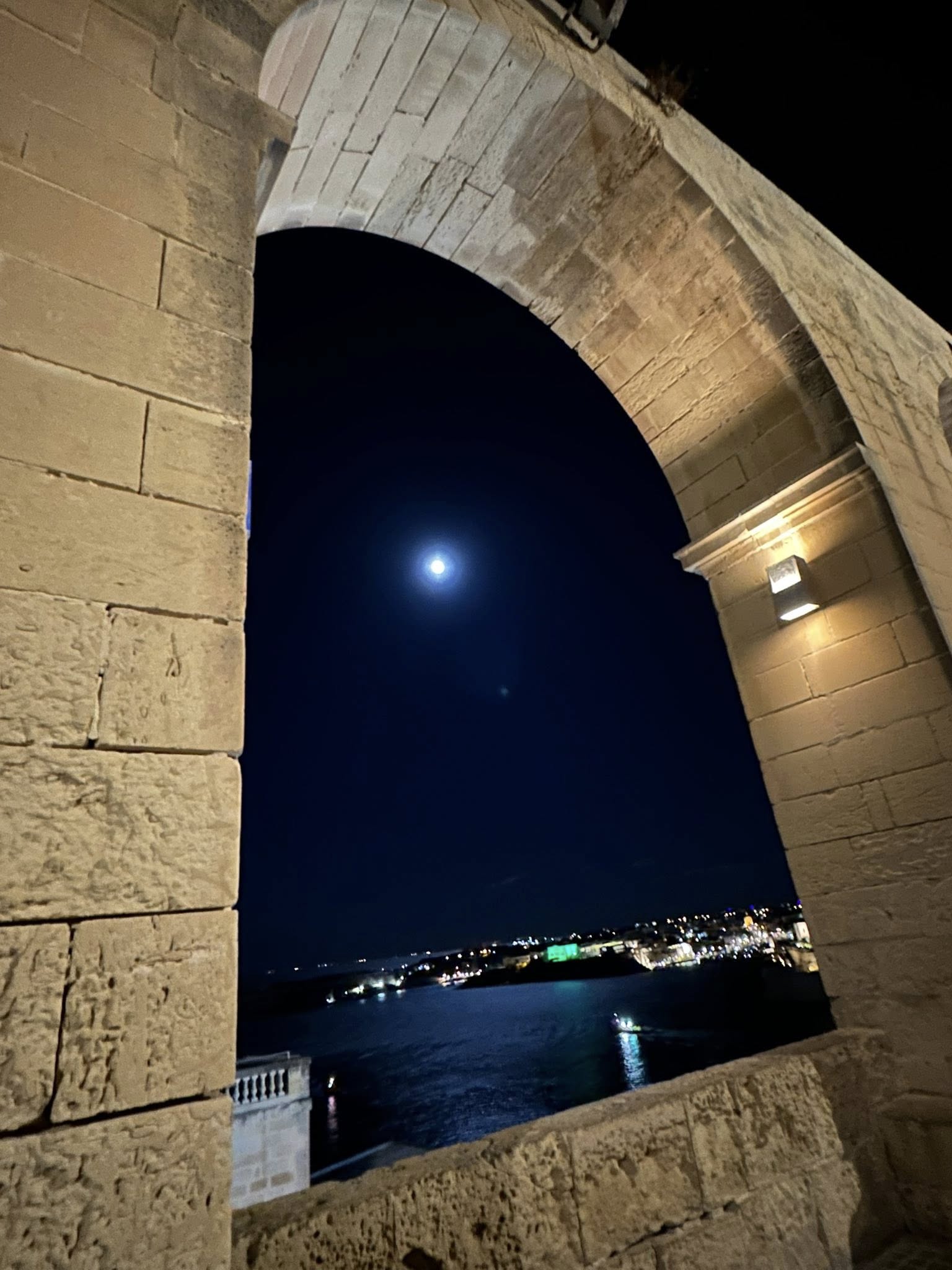 As time passed, I began to notice details - small gates above which are the coats of arms of old knightly families; inscriptions in the Maltese language, which is a mixture of Arabic and Romance influences; old shops selling traditional handicrafts.I saw the walls of the old hospital Sacra Infermeria, today the congress hall. I walked past the Maltese library, where the records of the order were kept and where the knights used to write their notes.In the last days, I spent time in street cafes, watching people passing by and listening to conversations in several languages. Valletta is a place where tourists, locals and foreigners who work in Malta mix.I often walked to the port and watched the boats carrying people to Sliema or Trogli. I saw the sea change color throughout the day, the sun crossing the walls and disappearing behind the hills on the other side of the island.I will never forget what I saw and experienced and I hope to return one day.
As time passed, I began to notice details - small gates above which are the coats of arms of old knightly families; inscriptions in the Maltese language, which is a mixture of Arabic and Romance influences; old shops selling traditional handicrafts.I saw the walls of the old hospital Sacra Infermeria, today the congress hall. I walked past the Maltese library, where the records of the order were kept and where the knights used to write their notes.In the last days, I spent time in street cafes, watching people passing by and listening to conversations in several languages. Valletta is a place where tourists, locals and foreigners who work in Malta mix.I often walked to the port and watched the boats carrying people to Sliema or Trogli. I saw the sea change color throughout the day, the sun crossing the walls and disappearing behind the hills on the other side of the island.I will never forget what I saw and experienced and I hope to return one day.


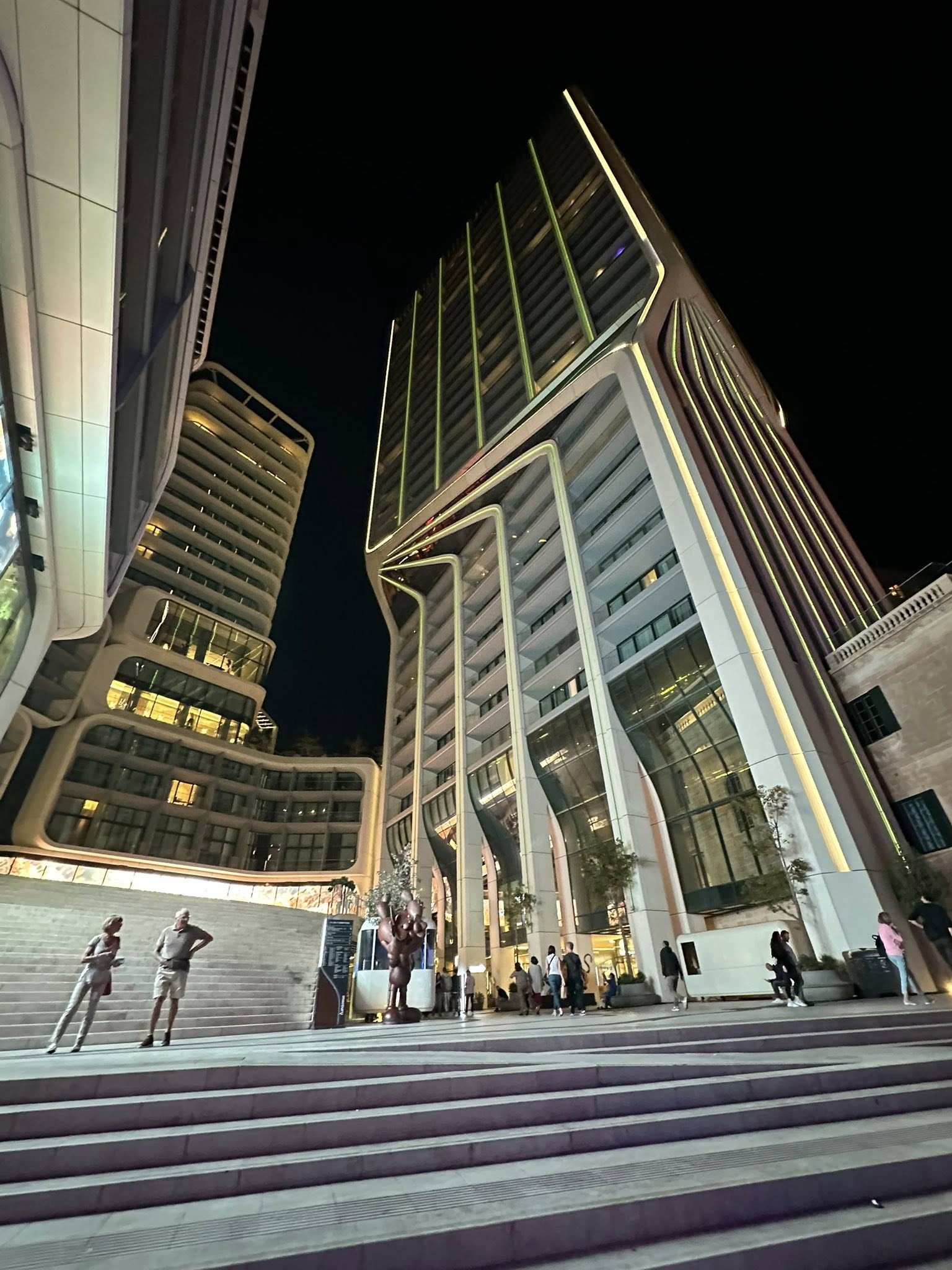


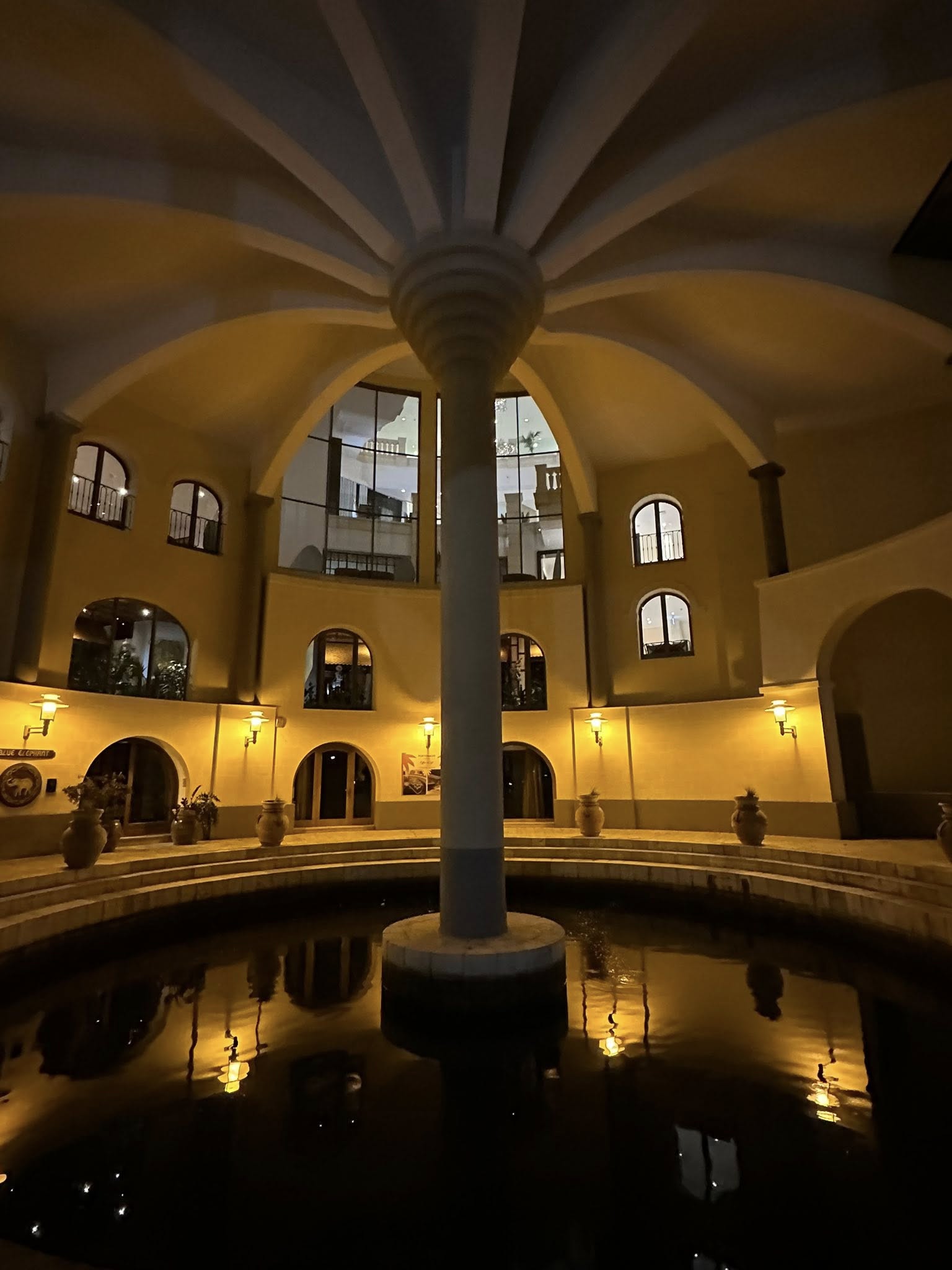
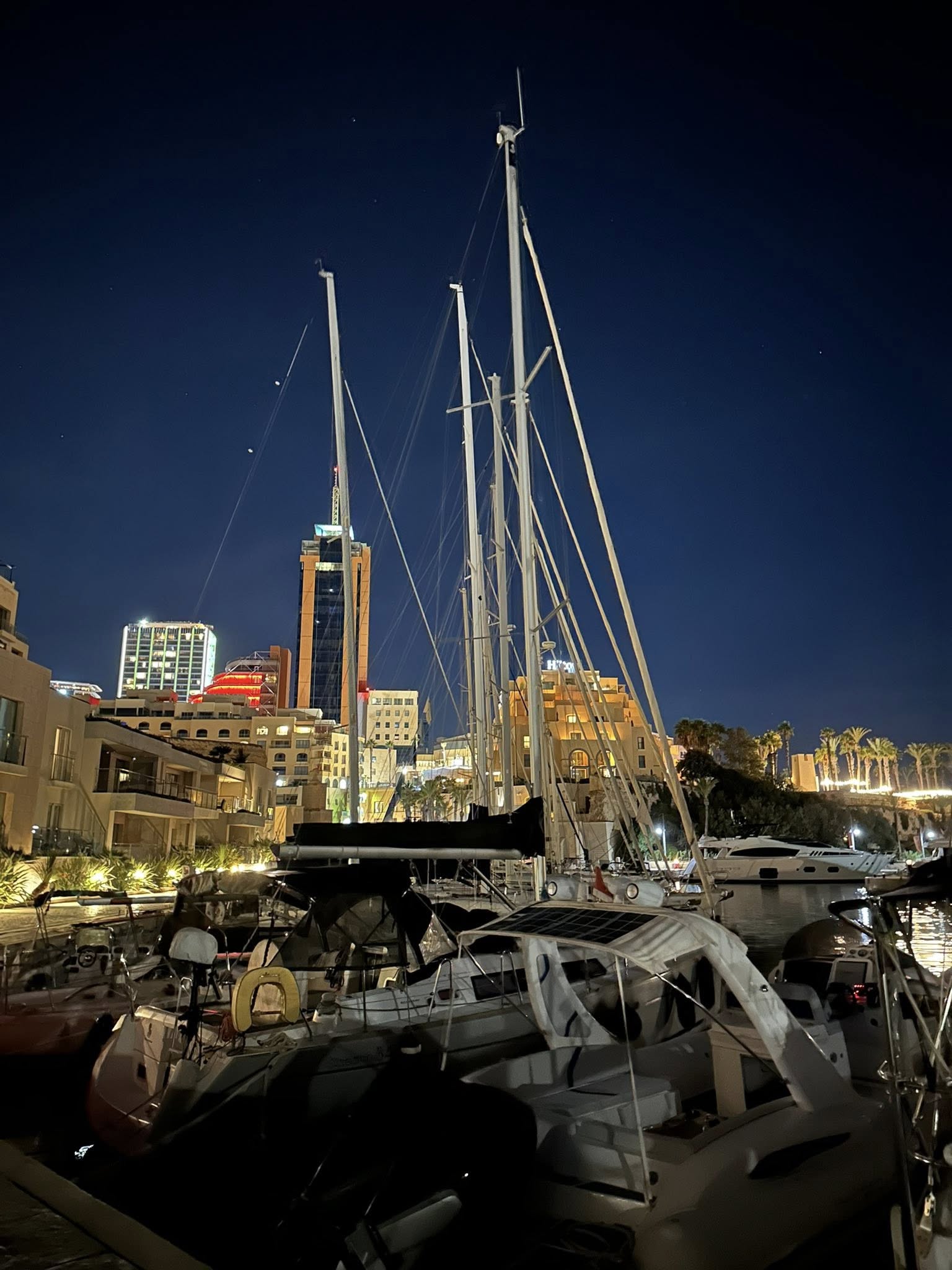
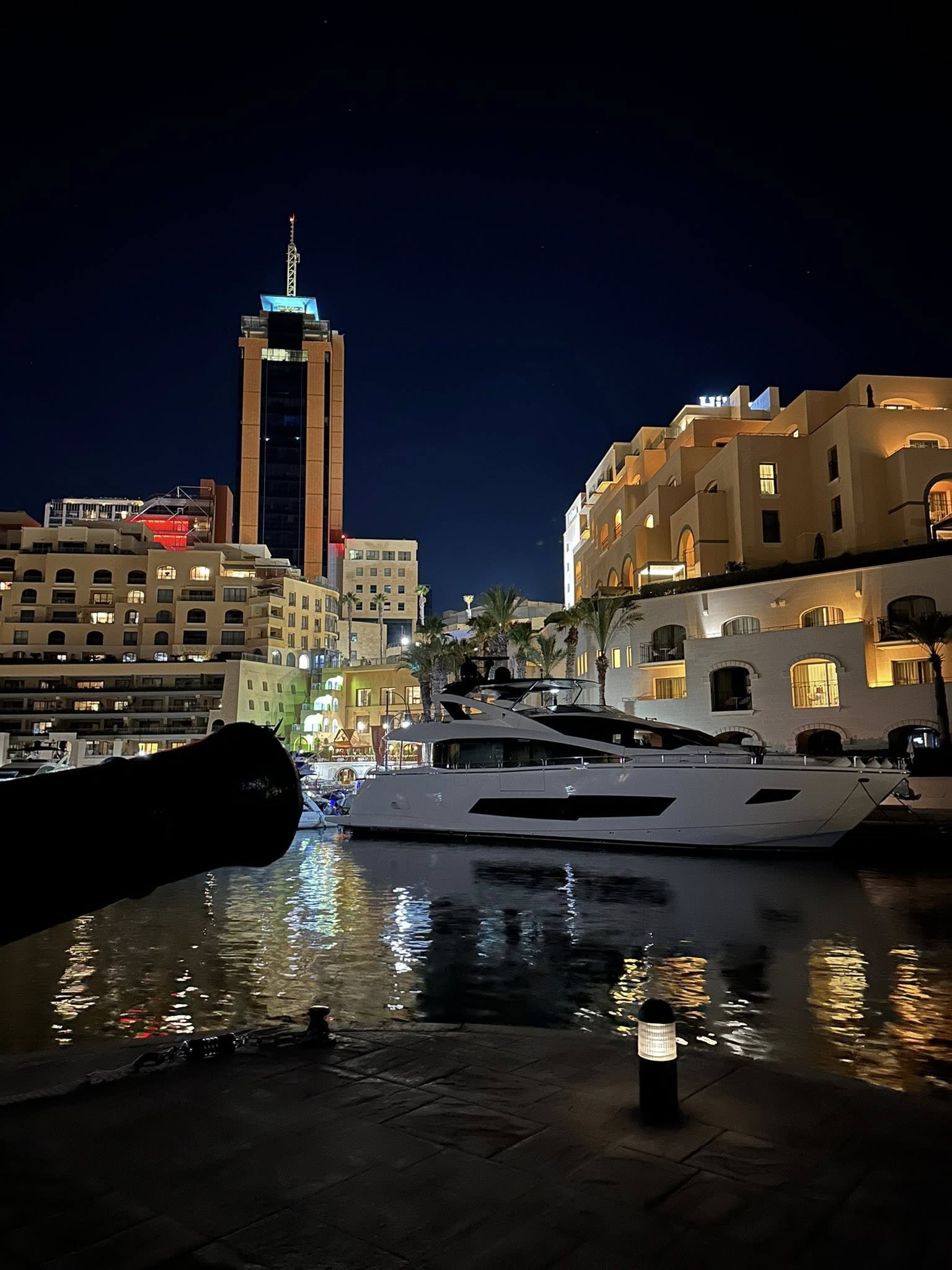
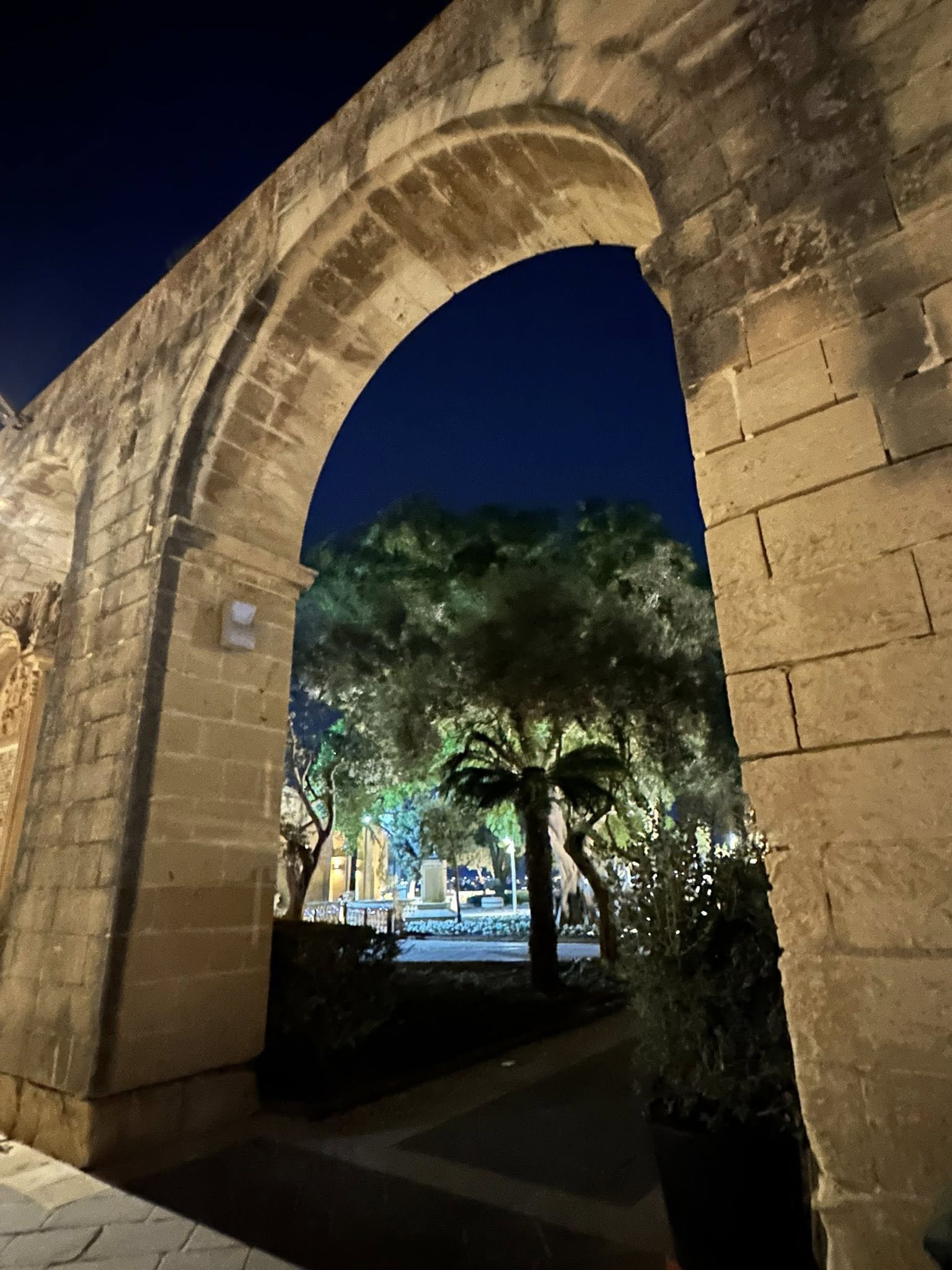

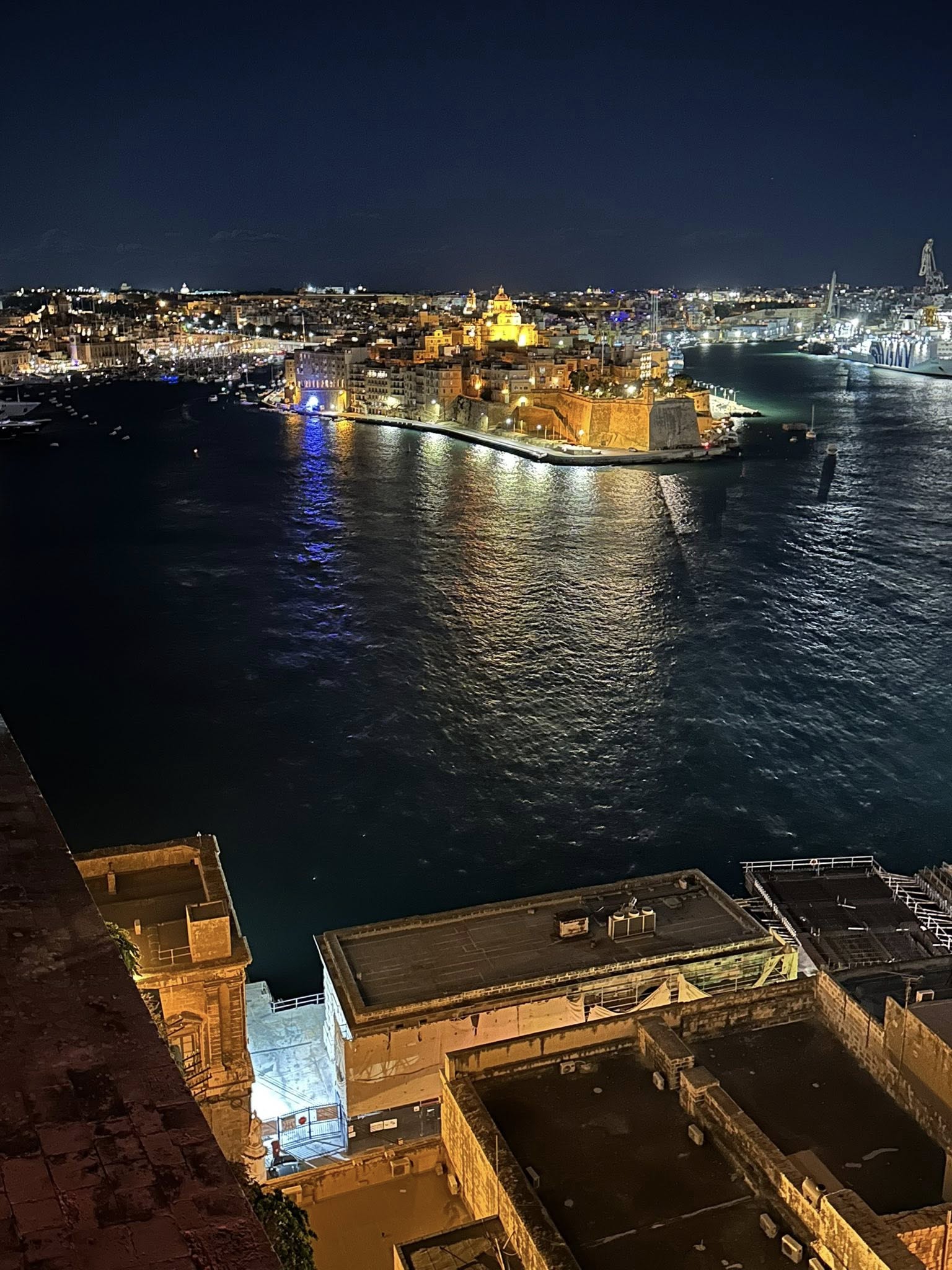
Thank you for reading my post. All the best Dragan